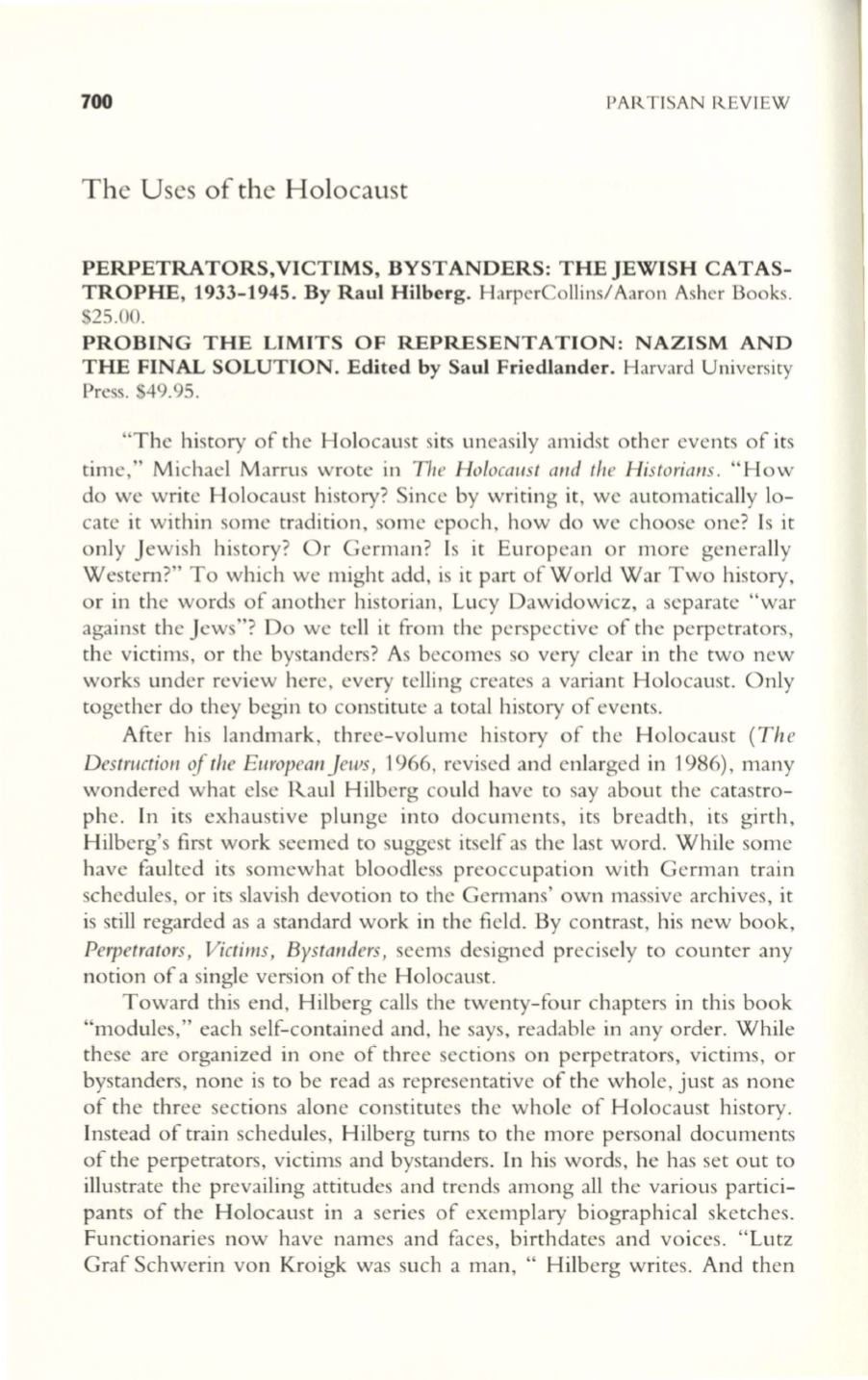
700
PAR.TISAN
r~EV[EW
The Uses of the Holocaust
PERPETRATORS,VICTIMS, BYSTANDERS: THE JEWISH CATAS–
TROPHE, 1933-1945. By Raul Hilberg.
HarperCollinslAaron Asher Books.
$25.00.
PROBING THE LIMITS OF REPRESENTATION: NAZISM AND
THE FINAL SOLUTION. Edited by Saul Friedlander.
Harvard University
Press. $49.95.
"The history of the Holocaust sits uneasily amidst other events of its
time," Michael Marrus wrote in
The Holocaust and the Historians.
"How
do we write Holocaust history? Since by writing it, we automatically lo–
cate it within some tradition, some epoch, how do we choose one? Is it
only Jewish history? Or German? Is it European or more generally
Western?" To which we might add, is it part of World War Two history,
or in the words of another historian, Lucy Dawidowicz, a separate "war
against the Jews"? Do we tell it from the perspective of the perpetrators,
the victims, or the bystanders? As becomes so very clear in the two new
works under review here, every telling creates a variant Holocaust. Only
together do they begin
to
constitute a total history of events.
After his landmark, three-volume history of the Holocaust
(The
Destruction
of
the European Jews,
1966, revised and enlarged in 1986), many
wondered what else Raul Hilberg could have
to
say about the catastro–
phe. In its exhaustive plunge into documents, its breadth, its girth,
Hilberg's first work seemed to suggest itself as the last word. While some
have faulted its somewhat bloodless preoccupation with German train
schedules, or its slavish devotion to the Germans' own massive archives, it
is still regarded as a standard work in the field. By contrast, his new book,
Perpetrators, Victims, Bystarlders,
seems designed precisely to counter any
notion of a single version of the Holocaust.
Toward this end, Hilberg calls the twenty-four chapters in this book
"modules," each self-contained and, he says, readable in any order. While
these are organized in one of three sections on perpetrators, victims, or
bystanders, none is
to
be read as representative of the whole, just as none
of the three sections alone constitutes the whole of Holocaust history.
Instead of train schedules, Hilberg turns to the more personal documents
of the perpetrators, victims and bystanders. In his words, he has set out
to
illustrate the prevailing attitudes and trends among all the various partici–
pants of the Holocaust in a series of exemplary biographical sketches.
Functionaries now have names and faces, birth dates and voices. "Lutz
Graf Schwerin von Kroigk was such a man, " Hilberg writes. And then


